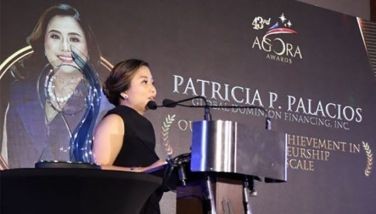PHL investment spending growth rate stands at 21.6%
CEBU, Philippines - The Philippines is slowly shifting into an investment-driven economy from largely a consumption-driven economy as noted on the investment spending growth rate of the country, which is 21.6 percent for the first few months of the year.
Economist Antonio Jose Periquet, and former country strategist of Deutsche Regis Partners, said that while the Philippines remains a consumption-led economy with remittances from OFWs providing hefty contribution to the country’s gross domestic product (GNP), Filipinos are now learning to invest their money wisely.
The period from 1990 to 2009 saw the consumption contributing largely to GDP while investments and government spending were trailing behind consumer spending.
Periquet, citing data from the National Income Accounts, noted that the GDP grew 4.7 percent from 2000 to 2009 primarily driven by consumption sector with growth rate of 4.7 percent during this period compared with investment and government spending which improved by 2.4 percent and 3.7 percent respectively.
The period from 2010-2016, according to his simulation, consumption will slowdown growing by 4.7 percent while investment will improve by eight percent annually.
Government spending will improve by four percent during the given period. With this investment-led scenario, Periquet said that GDP will grow by six percent and this will provide challenge for the business sector, as well as for the public and private sectors, to continue on investing to realize this economic growth.
He urged investors to consider the prevailing high return on equity (ROE) at 17 percent which he said, "it is very high compared to cost of capital."
The challenge is to shift from consumption- to investment- led economy, Periquet said noting that remittances of the OFWs in the last 20 years were displacing investment as driver of economic growth.
Commenting on the impact of the market turbulence in the major economies of the United States, Europe and China, Periquet said, that the biggest variable in terms of prospect of the country amidst the economic outlook in these economies "will be the internal and not the external" variable, he said.
This he said to allay concern on the growth prospect of the economy which Periquet said would have opportunities to an unprecedented growth for the next five-year period.
He said that the current administration should put to use the "political capital" in the balance sheet to put in place the foundations that will make this growth prospect to happen. The present government still experiencing high approval rating and this it should put into use to drive the economy into mobilizing investments, the economist said.
He called on the public-private sector to rally behind this growth acceleration as he noted certain weaknesses in the economy including "soft factors" such as the lack on rules of law and on property laws, to name a few, as well as the lack of consistency on the application of laws which boils down to lack of "governance." Periquet said that these "soft factors" already surpassed the previous widely-held concern of the businesses which listed down cost of electricity as one of their top concerns.
Inflation will not be high on the concern agenda as the country moves towards investment-led economy, he said citing that inflation rate at 4.5 percent currently.
"We are no longer a chronic inflation country," he remarked adding that 51 percent of the consumer price index is food.
Periquet said that with an investment-led economy, the country is to achieve GDP of six percent with "good probability" and this he explained by citing data from the National Income Accounts showing that during the terms of former Presidents Cory Aquino and Fidel V. Ramos, the country's GDP recorded positive growth rates owing to the positive performances of the investment sector as contributor to the GDP.
"It's possible," he noted on the six percent improvement of GDP until 2016. The national income records showed that from 1987-1990 and from 1994-1998 which were the terms of Aquino and Ramos respectively, the country's GDP recorded growth rate of 5.8% and 5.0% respectively and these performances achieved with investment sector outpacing growth of consumption as main engine of GDP.
It was during the term of Aquino that GDP at 5.8 percent from 1987 to 1990 was realized and with investment contributing to the GDP the highest or growing by 18.4 percent annually compared to consumption and government spending improving by 51.percent and seven percent respectively during the period.
Periquet said that the Philippines underwent a decade of underinvestment, a period that measured the tightness of supply but presently the returns on investments will be very high, he said while recommending the business sector "to keep on investing...and minimize risks." (FREEMAN)
- Latest
- Trending

















